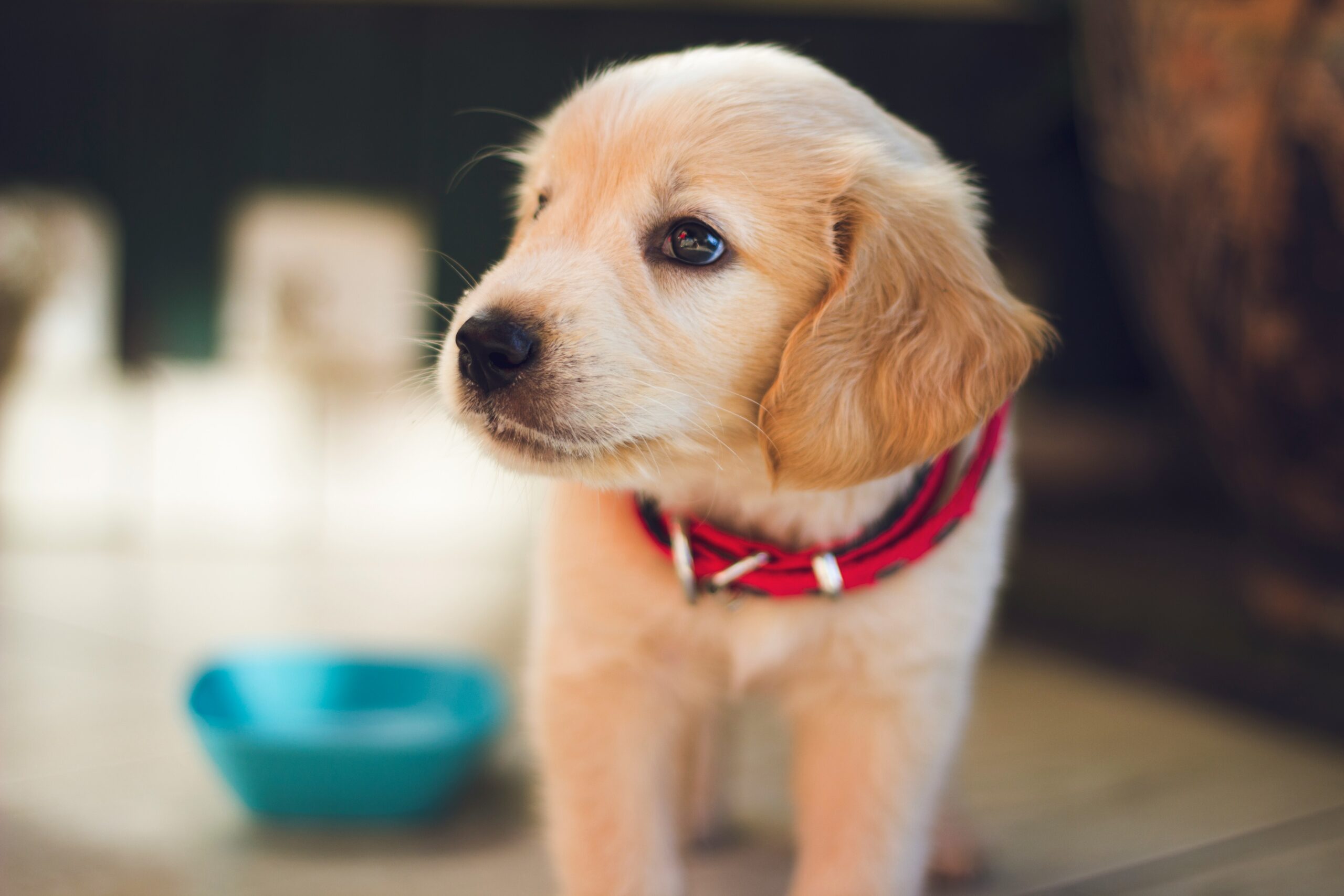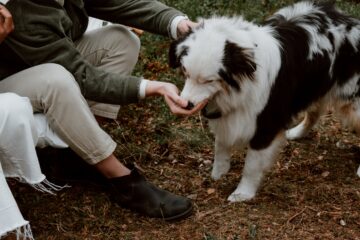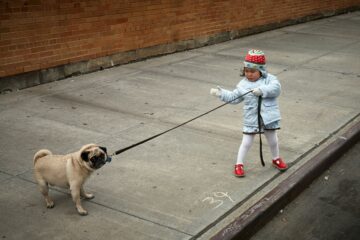Embarking on the journey of toilet training your adorable puppy is not just a practical necessity; it’s an opportunity to strengthen the bond between you and your furry friend.
The idea of accomplishing this feat in just seven days might seem like a lofty goal, but fear not – this guide is here to make the process smooth, enjoyable, and, most importantly, effective.
With our 11 friendly tips, tailored to – How to Toilet Train a Puppy in 7 Days, you’ll find that this week-long adventure can be both successful and fun.
Table of Contents
How to Toilet Train a Puppy in 7 Days: Mastering Puppy Potty Training

1] Consistent Schedule
Creating a consistent daily schedule is pivotal in the successful toilet training of your puppy.
Structuring specific times for feeding, playtime, and bathroom breaks not only establishes a routine but also aids in predicting when your puppy is likely to need to go outside.
This regularity fosters a sense of security for your puppy, contributing to effective toilet training within a relatively short timeframe.
Consistency in the schedule serves as a foundational element for a well-behaved and housetrained pet.
2] Designated Potty Area
Designating a specific area outdoors for potty breaks is a strategic approach to streamline the toilet training process.
By consistently taking your puppy to the same spot, you create a strong association between that area and bathroom activities.
Tip: “Consistent use of the designated area minimizes confusion and reinforces the desired behavior.”
This focused and repetitive approach accelerates the learning process and minimizes confusion for your puppy, establishing a clear distinction between indoor and outdoor bathroom locations.
3] Frequent Potty Breaks
Frequent outdoor potty breaks are essential, particularly after meals, playtime, and waking up.
Anticipating your puppy’s needs and providing timely bathroom breaks not only reduces the chances of accidents indoors but also reinforces the desired behavior of relieving themselves outside.
This proactive approach sets the stage for a smoother toilet training experience, allowing your puppy to grasp the outdoor bathroom concept more quickly.
4] Positive Reinforcement
Positive reinforcement plays a crucial role in encouraging and reinforcing desirable behavior.
Celebrate and reward your puppy when they successfully go to the bathroom outside.
This positive association with outdoor potty activities creates motivation for your puppy to repeat the behavior consistently.
Whether through verbal praise, treats, or affectionate gestures, positive reinforcement builds a connection between the desired action and a rewarding experience.
Celebrating your puppy’s success with enthusiastic praise or treats reinforces the connection between the desired behavior and positive outcomes
5] Supervision Indoors
Maintaining close supervision of your puppy when indoors is a proactive measure to prevent accidents.
By closely monitoring their behavior, you can identify early signs of needing to go to the bathroom.
This allows you to redirect them promptly to the designated outdoor area, minimizing the chances of accidents inside the house.
Supervision is a fundamental component of successful toilet training, ensuring a focused and attentive approach to your puppy’s needs.
6] Crate Training
Crate training is a valuable tool for successful toilet training.
Dogs naturally avoid soiling their sleeping area, making the crate a safe haven that aids in accident prevention.
Introduce the crate gradually and associate it with positive experiences, such as treats and comfort items.
This creates a positive association with the crate as a secure and comfortable space, reinforcing the idea that outdoor bathroom breaks are preferable.
• Dogs avoid soiling their sleeping area in the crate • Introduce the crate gradually with positive experiences • Create a positive association, reinforcing the preference for outdoor bathroom breaks.
7] Establishing a Potty Command
Associating a specific command with the act of going to the bathroom outdoors facilitates effective communication between you and your puppy.
Use consistent phrases like “go potty” or “do your business” during outdoor bathroom breaks.
This verbal cue helps your puppy understand the expected behavior, creating a clear link between the command and the action.
Over time, your puppy will associate the command with the act of relieving themselves, streamlining the training process.
8] Clean Accidents Thoroughly
Accidents are inevitable during the toilet training process, but it’s crucial to clean them thoroughly to eliminate lingering odors.
Residual scents may attract your puppy back to the same spot, potentially leading to repeated accidents.
Use pet-friendly enzymatic cleaners designed to break down and neutralize odors effectively.
Thorough cleaning ensures a fresh and clean environment, reducing the likelihood of indoor accidents.
Thoroughly clean accidents to eliminate odors that may attract your puppy back to the same spot
9] Limit Water Intake Before Bed
Controlling your puppy’s water intake in the evening is a proactive measure to promote dry nights and minimize the chances of overnight accidents.
Adjust the timing of water access to create a window before bedtime where your puppy has limited access to water.
This thoughtful management contributes to a dry sleeping environment, reinforcing successful toilet training within the specified timeframe.
10] Stay Patient and Positive
Toilet training is a learning process for your puppy, and maintaining patience and a positive attitude is key to success.
Embrace the journey, celebrate progress—no matter how small—and avoid negative reactions to accidents.
A positive and patient approach fosters a trusting bond between you and your furry friend, creating a conducive environment for effective toilet training over the 7-day period.
11] Monitor Diet
Paying attention to your puppy’s diet and feeding schedule is integral to regulating bowel movements.
Consistent feeding times contribute to regular and predictable bathroom habits, making it easier to anticipate when your puppy is likely to need a bathroom break.
Monitoring their diet ensures that their digestive system remains on a schedule, aligning with the goals of successful toilet training within the designated 7-day timeframe.
• Pay attention to your puppy's diet and feeding schedule for bowel regulation • Consistent feeding times contribute to regular bathroom habits • Easier to anticipate when your puppy needs a bathroom break • Monitoring diet aligns with successful toilet training within a designated timeframe
How to Toilet Train a Puppy in 7 Days: FAQs
Is it realistic to toilet train a puppy in 7 days?
Yes, it’s possible to achieve significant progress in toilet training within 7 days by implementing a consistent and focused approach. Keep in mind that individual puppy learning speeds may vary.
What if my puppy has accidents after 7 days?
Accidents can happen, even after the initial training period. Stay consistent with the established routine and reinforce positive behaviors. Additional reinforcement may be needed for some puppies.
Can older dogs be toilet trained in the same timeframe?
While older dogs may take longer to adjust, the principles of consistent scheduling and positive reinforcement apply. Adjust expectations based on the individual needs and learning pace of your older dog.
Should I use pee pads during the training process?
While pee pads may be convenient, it’s generally recommended to focus on outdoor training. Transitioning from pee pads to outdoor potty may be smoother for your puppy in the long run.

Conclusion:
Toilet training your puppy in 7 days requires dedication, consistency, and a positive approach.
By following these 11 expert tips on How to Toilet Train a Puppy in 7 Days, you’ll set the foundation for a well-behaved and house-trained furry companion.
Remember, it’s not just about reaching the destination in seven days; it’s about creating a positive and lasting experience for your furry companion.
Celebrate the joyous moments, stay consistent with the techniques, and relish the newfound sense of understanding between you and your now toilet-trained puppy.
Here’s to a future filled with clean paws and the warmth of a successful training adventure!





